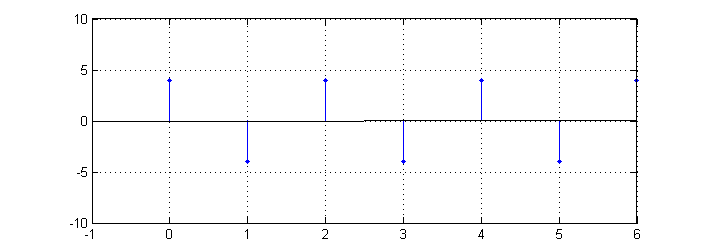Contents
[hide]Periodic CT and DT Signals
Part 1
Background
When given a CT signal, DT signals can be produced by sampling the CT at certain intervals. For Example: Given the periodic signal $ 4cos(\pi t) $, The following 2 signals can be produced, one periodic and one not.
CT Periodic Signal
DT Periodic Signal
This function has a sampling frequency of 1 unit.
DT Non-Periodic Signal
If we now sample this function at $ \frac{1}{\pi} $, the equation would turn into $ 4cos[n] $ , giving
which is not periodic.
Part 2
Background
A function which is not periodic can be made to be periodic if it is concatenated with itself over a given range. The equation for this is given as $ \sum_{k}^\infty x(t+kT) $. For the equation $ y=4t^2 $, when $ T=5 $, the equation can be periodic.
Matlab Code
%Coding for part 2, citing help from Wei Jian Chan's homework posting %Creating a 3,99999 size vector t=[0.001:0.001:5;5.001:0.001:10;10.001:0.001:15]; %setting the three variables, with their offsets y=2*t(1,:).^2; y2=2*(t(2,:)-5).^2; y3=2*(t(3,:)-10).^2; %concatenating them, ie putting them after another y2=[y,y2,y3]; %making the new time axis for the whole thing t=0.001:0.001:15; %plotting plot(t,y4);
Periodic Function
Which is now a periodic version of that algebraic function.





